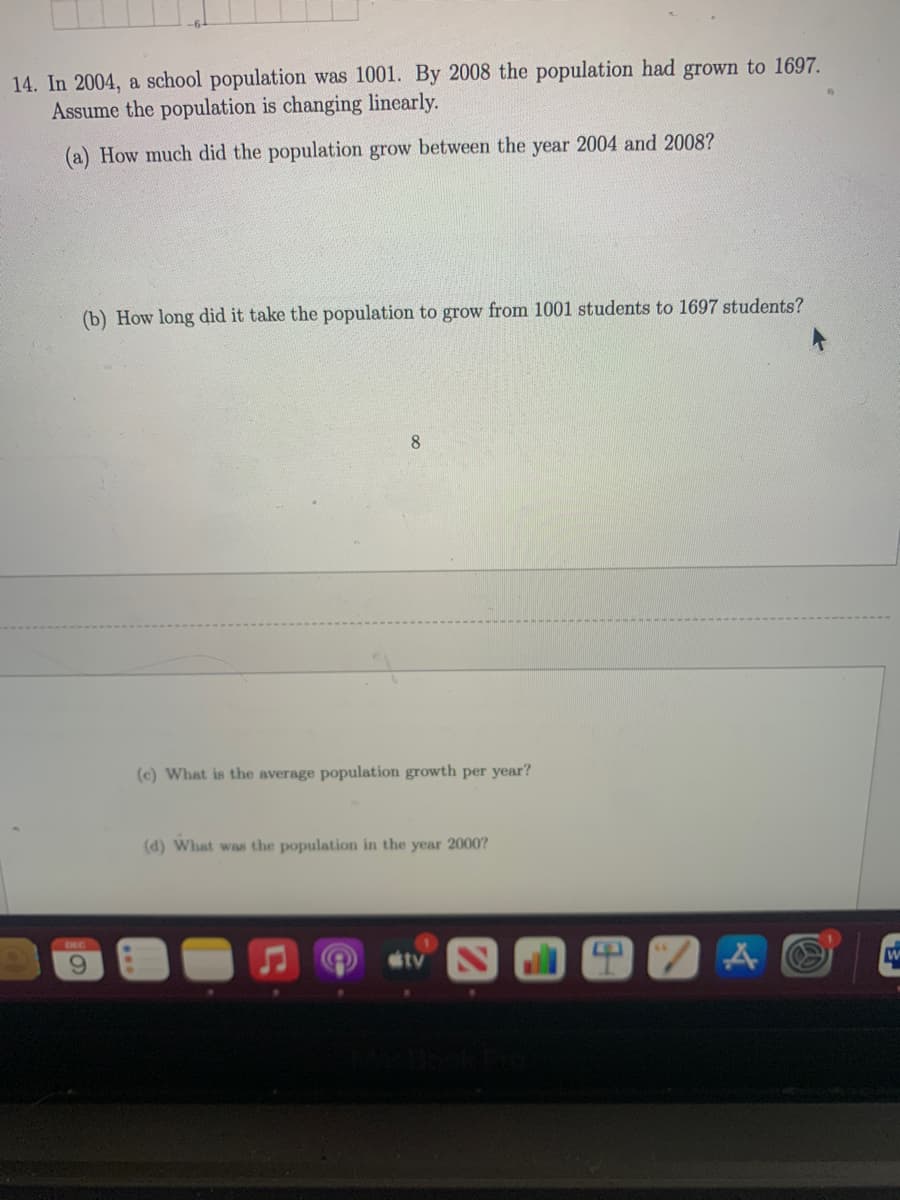14. In 2004, a school population was 1001. By 2008 the population had grown to 1697. Assume the population is changing linearly. (a) How much did the population grow between the year 2004 and 2008? (b) How long did it take the population to grow from 1001 students to 1697 students? 8. (c) What is the average population growth per year? (d) What was the population in the year 2000?
14. In 2004, a school population was 1001. By 2008 the population had grown to 1697. Assume the population is changing linearly. (a) How much did the population grow between the year 2004 and 2008? (b) How long did it take the population to grow from 1001 students to 1697 students? 8. (c) What is the average population growth per year? (d) What was the population in the year 2000?
Chapter4: Linear Functions
Section: Chapter Questions
Problem 8PT: Does Table 1 represent a linear function? If so, finda linear equation that models the data.
Related questions
Question

Transcribed Image Text:14. In 2004, a school population was 1001. By 2008 the population had grown to 1697.
Assume the population is changing linearly.
(a) How much did the population grow between the year 2004 and 2008?
(b) How long did it take the population to grow from 1001 students to 1697 students?
8.
(c) What is the average population growth per year?
(d) What was the population in the year 2000?
DEC
Expert Solution
This question has been solved!
Explore an expertly crafted, step-by-step solution for a thorough understanding of key concepts.
This is a popular solution!
Trending now
This is a popular solution!
Step by step
Solved in 2 steps

Recommended textbooks for you


Mathematics For Machine Technology
Advanced Math
ISBN:
9781337798310
Author:
Peterson, John.
Publisher:
Cengage Learning,

Algebra & Trigonometry with Analytic Geometry
Algebra
ISBN:
9781133382119
Author:
Swokowski
Publisher:
Cengage


Mathematics For Machine Technology
Advanced Math
ISBN:
9781337798310
Author:
Peterson, John.
Publisher:
Cengage Learning,

Algebra & Trigonometry with Analytic Geometry
Algebra
ISBN:
9781133382119
Author:
Swokowski
Publisher:
Cengage